The best robot lawn mowers used to be the preserve of affluent gardeners with acres of grass – but not any more! There are now models tailormade for smaller lawns and tighter budgets, bringing all the advantages of these clever little machines into the reaches of us modern gardeners.
While it’s still a major purchase, a robo-mower will pay back the investment in units of time – but that’s not the only reason to buy. Regular mowing is the single most important aspect of lawn care to achieve the lushest swathe. And while you won’t want to be pushing a lawn mower or dragging a cordless strimmer around that often yourself, a robot lawn mower embraces this little-and-often approach, leaving your lawn looking its very best.
Best robot lawn mowers at a glance:
The benefits of a robot lawn mower are fairly obvious. They free you from cutting grass yourself, and this may be worth its weight in gold if lawn mowing is a task you loathe even more than cleaning the bathroom. You don’t have to collect the clippings with a robot lawn mower either because the robot lawn mowers discard them finely as useful mulch. At Modern Gardens, we've taken a look at robot lawn mowers, how they work, if they are worth your investment, and which models are best.
Best robot lawn mowers
Best for complex gardens
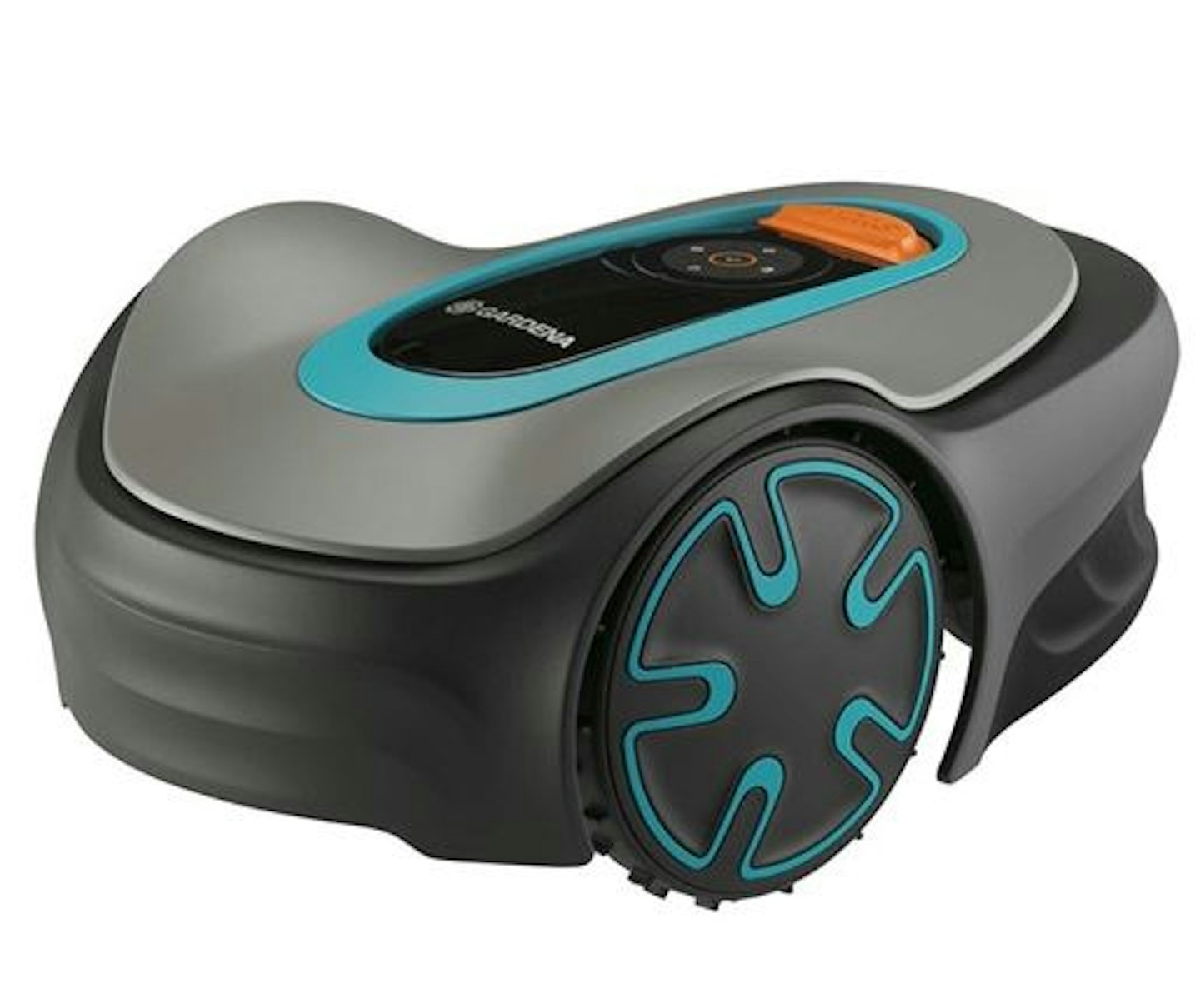 Tooled Up/Gardena
Tooled Up/Gardenawww.tooled-up.com
For complex or feature gardens, we recommend the Gardena Sileno Minimo 250. What we like about the Silena Minimo 250 is its ability to navigate tricky-shaped lawns and narrow passages. It will work in narrow areas of down to 60cm. Like the McCulloch robot mower, the Silena Minimo 250 has a control panel on the machine. However, this Gardena is mostly controlled by the app. There are a number of useful touches on this model that we like. One of these is the frost sensor that will pause any mowing set during near-freezing temperatures in order to protect the lawn. Granted, you don't send the mower out in the depths of winter but surprise frost does strike in spring.
Users' experience of setting up this robot lawn mower vary. Some found it easy, whilst others enlisted the help of a loved one. There are several Youtube tutorials that demonstrate how the Gardena SILENO Minimo 250 works.
Do note that this model is best suited to even ground, as a customer comments it struggles with slopes.
Pros
- Straightforward controls that are easy to understand
- Works well in wet weather
Cons
- Customer comments is no good if you go on holiday as it stops working after losing connection with the app after 3 days
| Working area: | 250m2 |
| Cutting: | Width 160mm; Height 20-45mm |
| Charge/Run time: | 60min/70min |
| Noise level: | 57dB |
| Max incline: | 25 per cent |
Best robot lawnmower for app compatibility
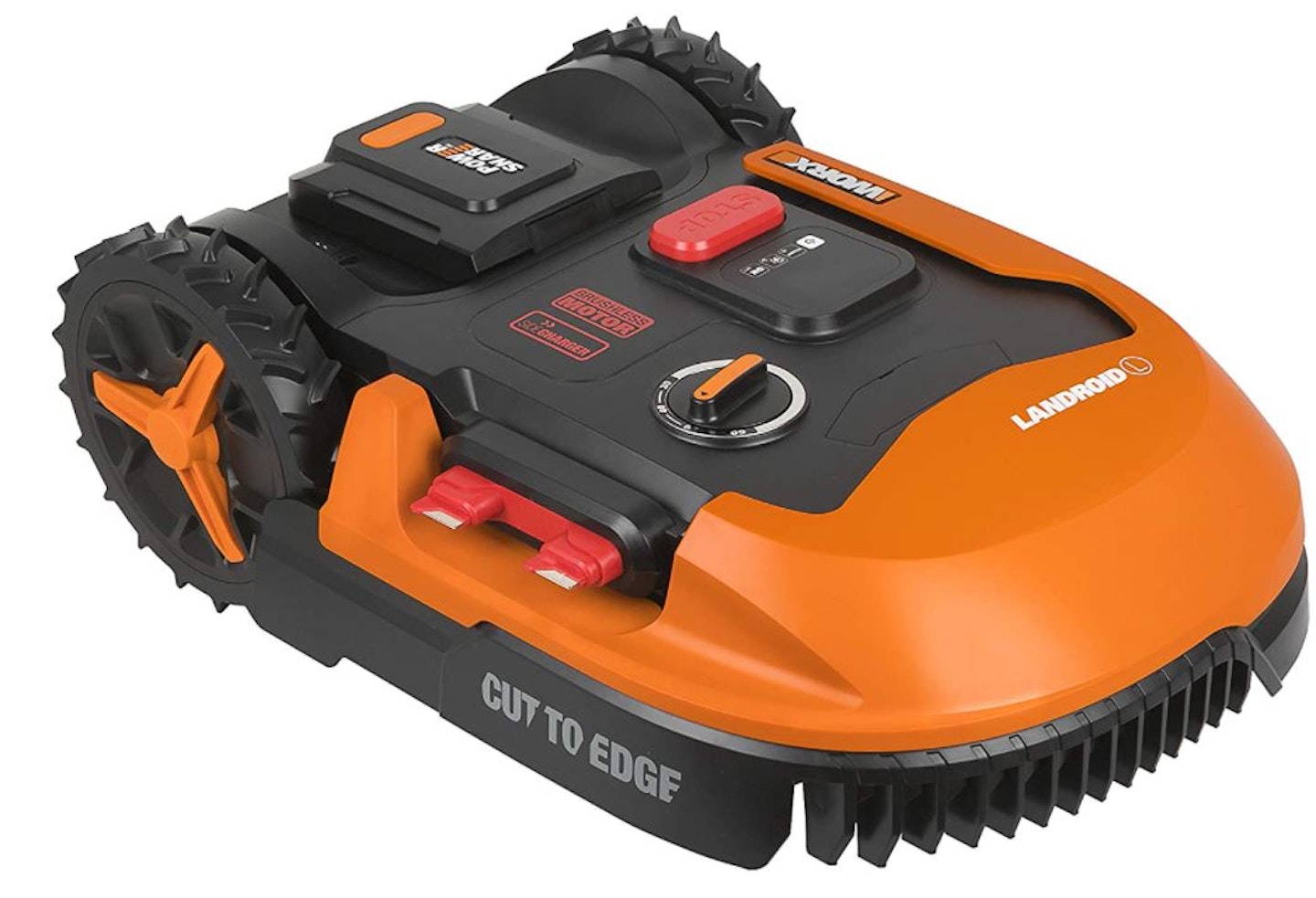 Amazon/Worx
Amazon/WorxThe Worx Landroid M500+ is a beast, weighing in at 16 kilos and being about 40cm in length and 56cm wide. There is a big range of Worx Landroid models, but this is our choice for convenience and a great app. You can set a PIN as a security measure. Connect the Landroid to your Wi-Fi router and measure the exact size of your lawn. The latter is done in the Landroid app using augmented reality, which is great fun. Like the Gardena model, the M500+ is mostly programmed via the app.
If you have rough terrain, this is the best robot lawn mower to deal with uneven ground as it has a self-levelling system.
Customers praise this model (some have even given it a pet name). But there are some niggles about how it stops when it encounters obstacles and can get trapped in divots. Overall, customers say their lawn looks much better maintained; just be prepared for the initial pain of getting it set up and working.
Pros
- Accessible and frees up a lot of time
- Handy auto-schedule functionality
- Detects obstacles with a collision sensor
Cons
- Takes a while to install and fine-tune
| Working area: | 500m2 |
| Cutting: | Width 180mm; Height 20-50mm |
| Charge time: | 75 min |
| Noise level: | 67dB |
| Max incline: | 35 per cent |
Best for small gardens
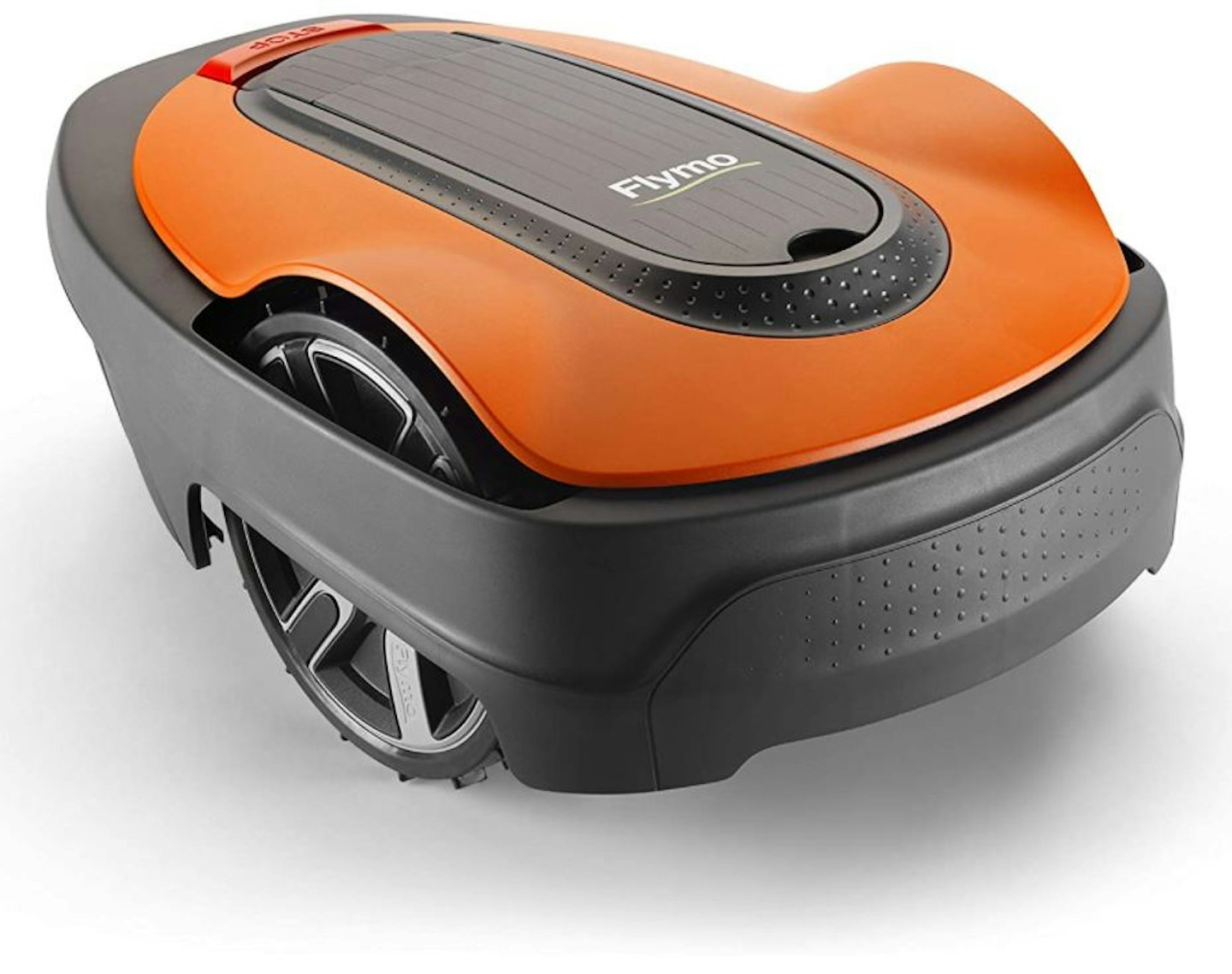 Amazon/Flymo
Amazon/FlymoThe Flymo EasiLife 350 is a solid competitor to the Gardena Silena. The EasiLife 350 has a slightly larger cutting area but packs very similar features. It's about the same size, has frost sensors, plus a great app. However, it has the ability to tackle steeper slopes (up to 35 per cent) and the aforementioned larger cutting area. It's also much more orange if that's what you prefer.
However, it cannot match the Gardena’s ability to slip down narrow passages. It is entirely circumstantial as to whether that is important for you or not.
This popular robot lawnmower has received over 1,640 reviews rating it 4.1 out of 5.
Customers say it can be used without the app, which might be preferable to some. It's also extremely quiet, which is beneficial if you or the neighbours have pets. The Flymo EasiLife is weatherproof so it can work in the rain, though it needs storing inside during the winter.
Pros
- Super quiet operation that won't annoy the neighbours
- Can be scheduled via the companion app
- Integrated frost sensors for winter
Cons
- Initial set-up takes time to get it right and requires installation of a wire around the perimeter
| Working area: | 350m2 |
| Cutting: | Width 160mm; Height 20-50mm |
| Charge/Run time: | 60min/60min |
| Noise level: | 58dB |
| Max incline: | 35 per cent |
Best charge time
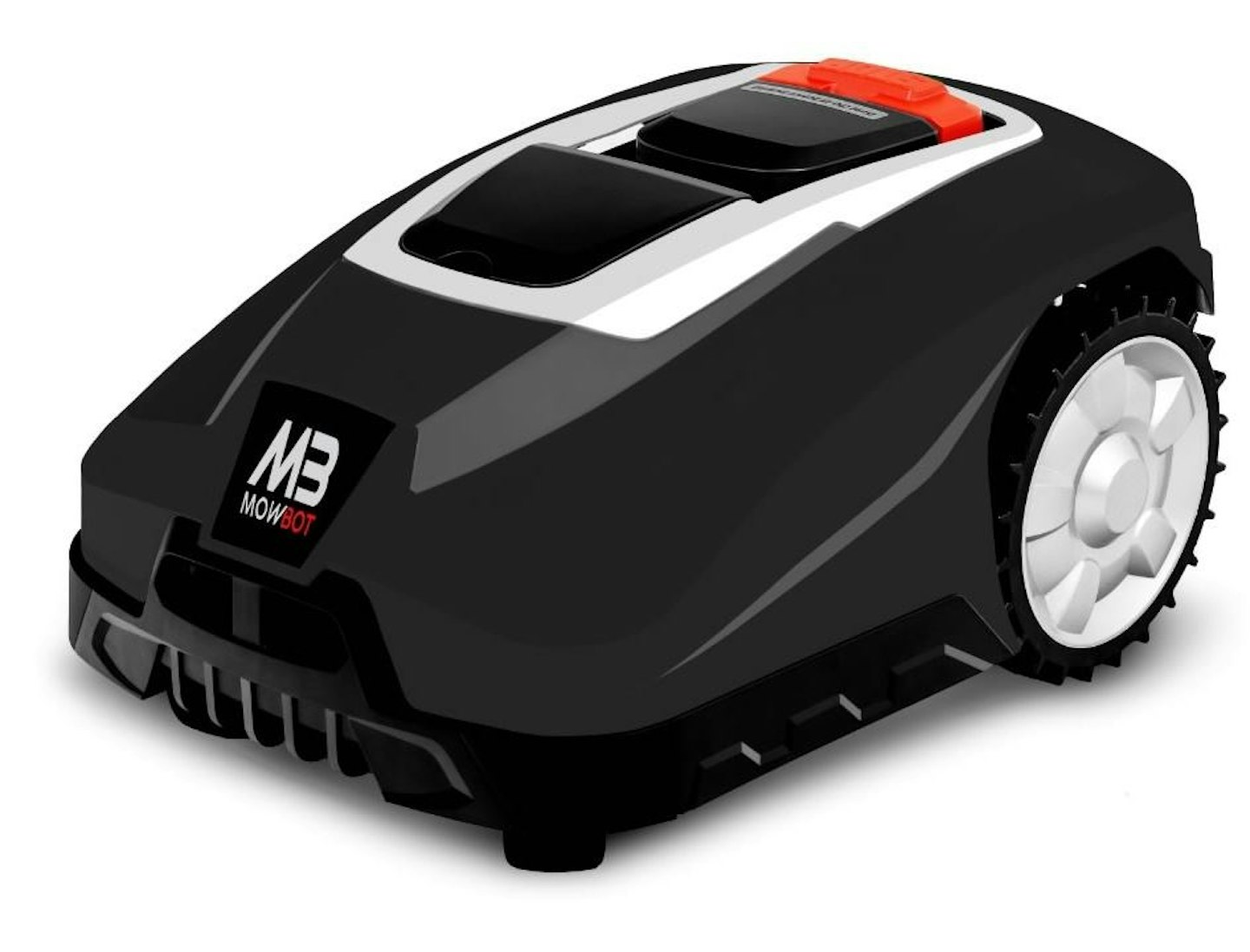 Just Lawnmowers/Cobra
Just Lawnmowers/Cobrawww.justlawnmowers.co.uk
The Cobra Mowbot mower is actually capable of covering a larger area than even the Worx unit. In addition, it also has the greatest range of cutting heights. As such, it represents the best value. Like the others, it is largely app-controlled and easy to program. However, the charge time of about 100 minutes is longer than the others and the run time of 60 minutes is no better.
Importantly, it's been designed to withstand the changeable British weather. Whilst there are very few reviews of this model available, Modern Gardens did get our hands on the Cobra Mowbot 800, keep scrolling to find out more.
Pros
- App control makes it easy to monitor and control
- Obstacle detection and a reliable performance
Cons
- Needs flat ground to work effectively
| Working area: | From 800 sq/m to 1200 sq/m |
| Cutting: | Width 19cm; Height 20mm to 60mm |
| Charge/Run time: | 60 mins |
| Max incline: | 20 degrees |
Best for virtual boundaries
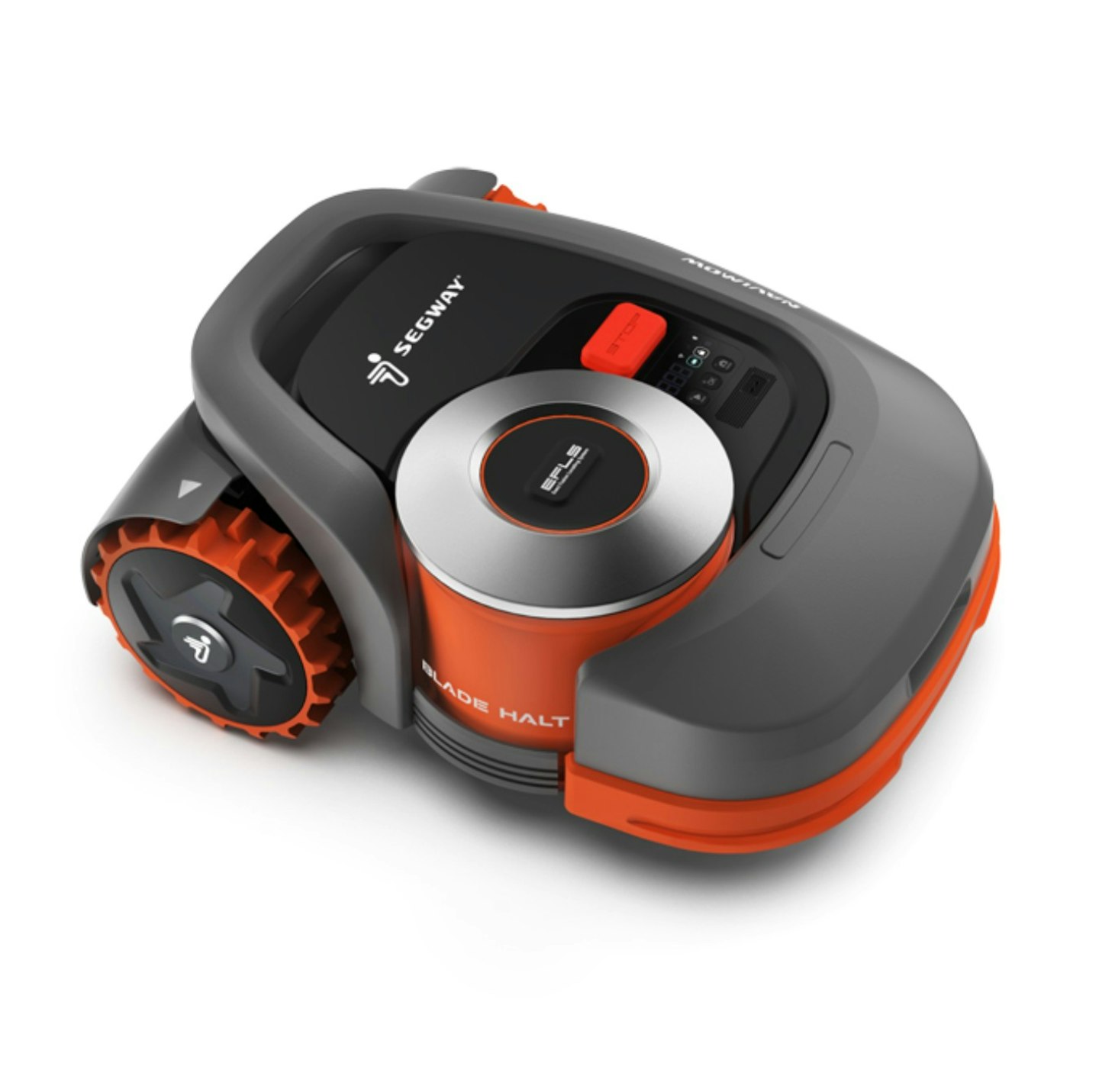 Mow With Us/Segway
Mow With Us/Segwaywww.mowwithus.com
Handling lawns up to 1,500m2, this smart cookie from Segway uses GPS technology to define its cutting area, with no physical boundary wires. This robotic mower is controlled via an app, so mowing schedules can be set and altered remotely. With a maximum gradient of 45 per cent and a choice of seven cutting heights, it’ll cope with a wide range of lawn conditions.
The initial set up might take a bit of time, but with a virtual boundary in place, this mower will then mow in an organised pattern, creating a perfectly even lawn. Reviews say the battery life is very good, using less than 10 per cent to mow a small lawn.
Pros
- Blade safety system for protection
- Choice of seven cutting heights
Cons
- Power supply cord for charging is short
| Working area: | 800m2 |
| Cutting: | Height: 30-60mm<br>Width: 210mm |
| Charge/run time: | N/A |
| Noise level: | 54dB |
Best for simple programming
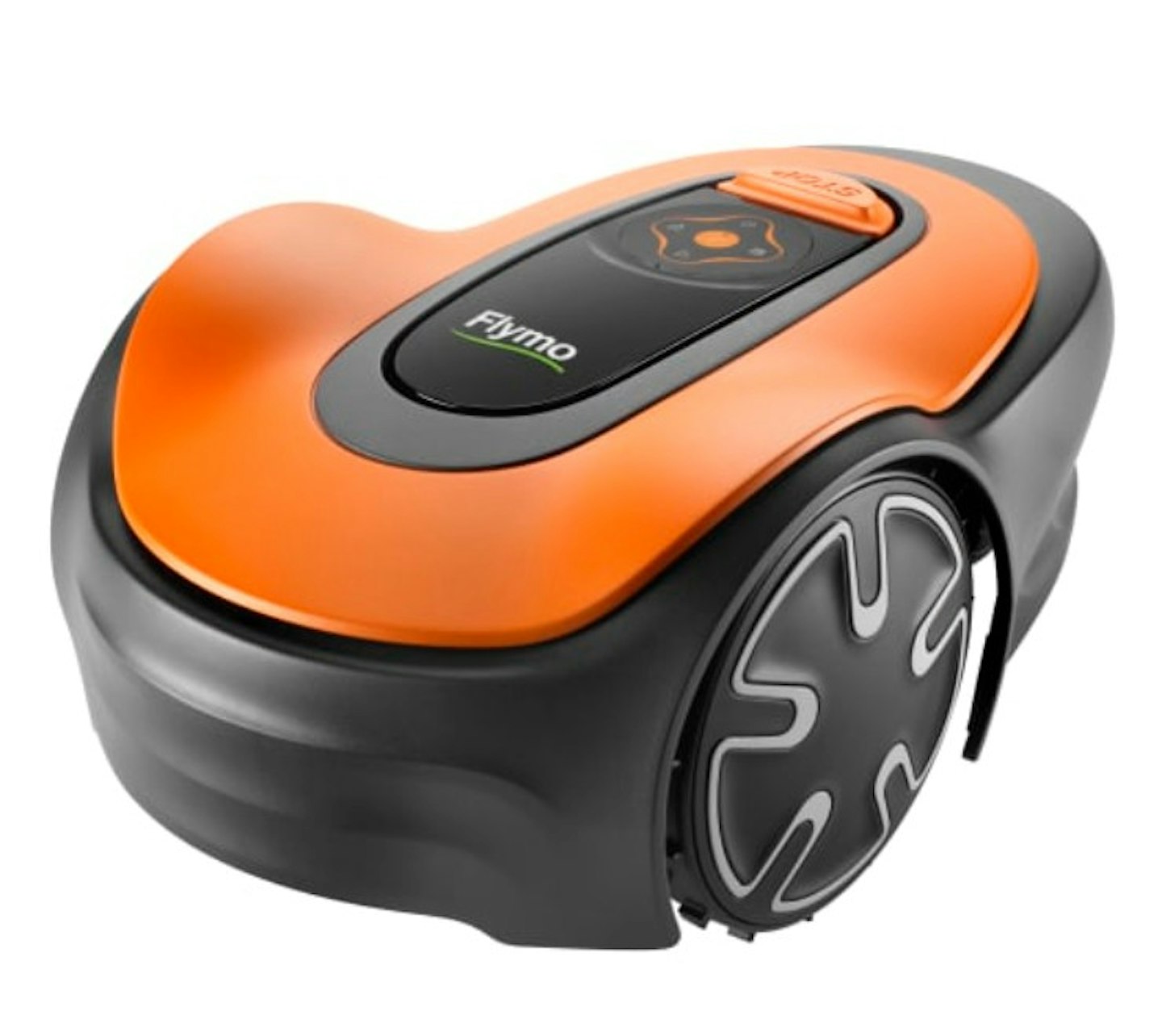 Wickes/Flymo
Wickes/Flymowww.wickes.co.uk
Designed to cut lawns up to 500m2, this compact mower has a push pad with simple LED indicators and smartphone control. Thanks to built-in LawnSense tech, cutting schedules automatically adapt to weather and growing conditions. The 150m guide-wire allows you to set multiple starting points for mowing and optimised navigation prevents track marks. It's compatible with the EasiLife app which allows you to schedule mowing and monitor its status.
Once it's set up, customers like that they can leave this robot lawn mower to do its thing and they don't have to worry about collecting grass clippings because it mulches them. However, some comment that it is fiddly to set up and the lawn needs to be clear of debris, such as leaf fall, in order for it to work. On the plus side, this Flymo model is quiet and reliable.
Pros
- Suitable for lawns up to 500m2
- Five cutting heights (20-50mm)
- Compatible with smartphone app
Cons
- Online reviews say there's limited places that will repair this model if it goes wrong
| Working area: | 500m2 |
| Cutting: | 20 - 50mm |
| Capacity: | 6.1kg |
Tested
Best looking design
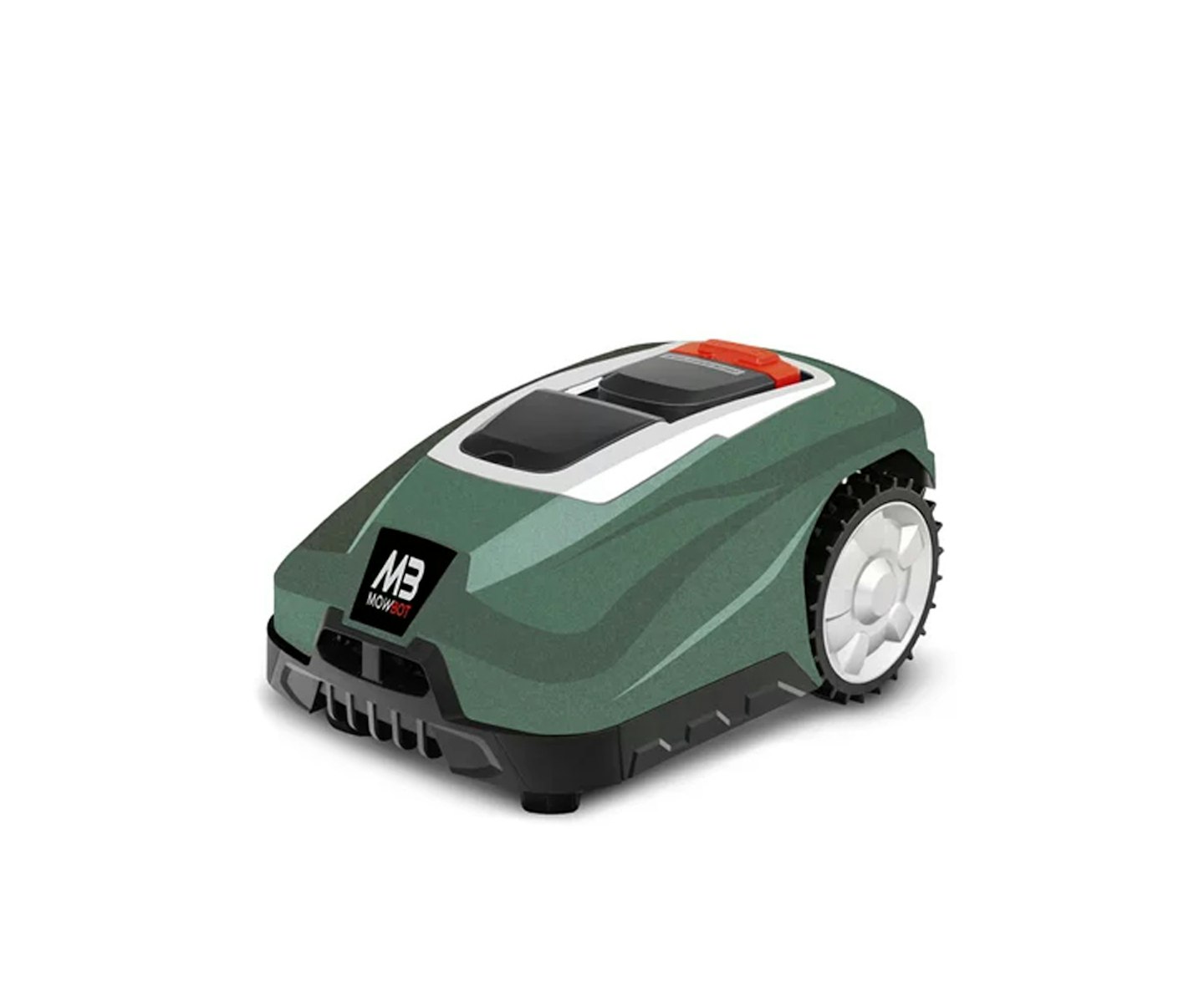 Mowers Online/Mowbot
Mowers Online/Mowbotwww.mowers-online.co.uk
This streamlined mower from Cobra is a winner with design lovers and is available in a choice of custom-finished shells, including glossy midnight black. App-controlled and using razor-sharp blades for an ultra-precise cut, it’s capable of clipping lawns up to 800m2 and comes with 200m of perimeter wire. While it will cope with 20 per cent slopes, it’s best suited to level lawns. At 66 decibels it’s not the quietest, but who wouldn’t want to draw attention to this chic creature?!
Our tester was impressed and said this is a great option for people who are unable to physically mow their lawns. Additionally, it replaces the need to have someone come and cut the grass for you, so it earns its money back over time.
Richard says it's slow but it does result in a consistently even lawn. But, it is best suited for flat ground. Set-up is time consuming, though not difficult. An app directs it and monitors the Mowbot's status.
Read our full review of the Cobra Mowbot.
Pros
- Handy built-in rain sensors
- Can be controlled by an app
Cons
- Best on flat ground and needs a boundary wire
| Working area: | Up to 800sq/m |
| Cutting: | Cutting Width: 18cm / 7"<br>Cutting Height: 20 - 60mm |
| Run time: | 60 mins |
Best for speedy set-up
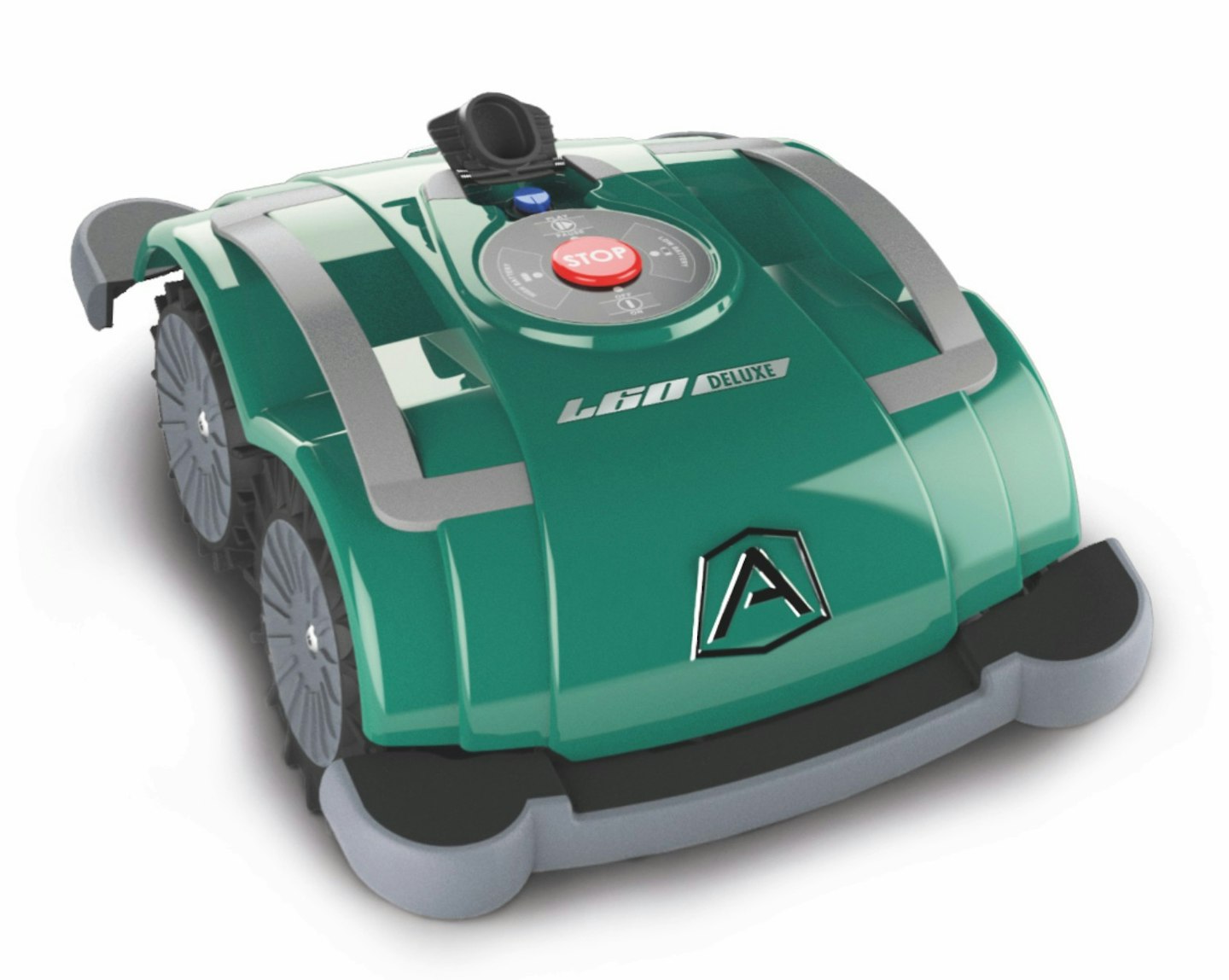 Ambrogio
Ambrogiowww.ambrogio.co.uk
Sophisticated sensors including front, rear and lawn-edge drop means that this mower has no need for boundary wires. The Ambrogio L60 Elite S+ can navigate the most efficient cutting route on a lawn up to 400m2, avoiding obstacles such as trees, planters or beds. Sensors beneath the mower detect when the mower is over level patios or paths too. Four-wheel drive provides plenty of traction, coping with slopes up to 50 per cent.
A customer comments that their Ambrogio coped well with tougher grass and a bumpy lawn. But bear in mind, there are only two cutting heights. So, if you're looking for a robust robot lawnmower, that's quiet and doesn't need a boundary wire, this is a top recommendation.
Pros
- Connect to the Ambrogio app through Bluetooth for even more convenience
- Front and rear sensors to avoid obstacles
Cons
- Cutting area not as large as some on this list
| Working area: | 400m2 |
| Cutting: | Cutting width: 25cm<br>Cutting height: 42-48cm |
| Run time: | N/A |
Best for voice control capability
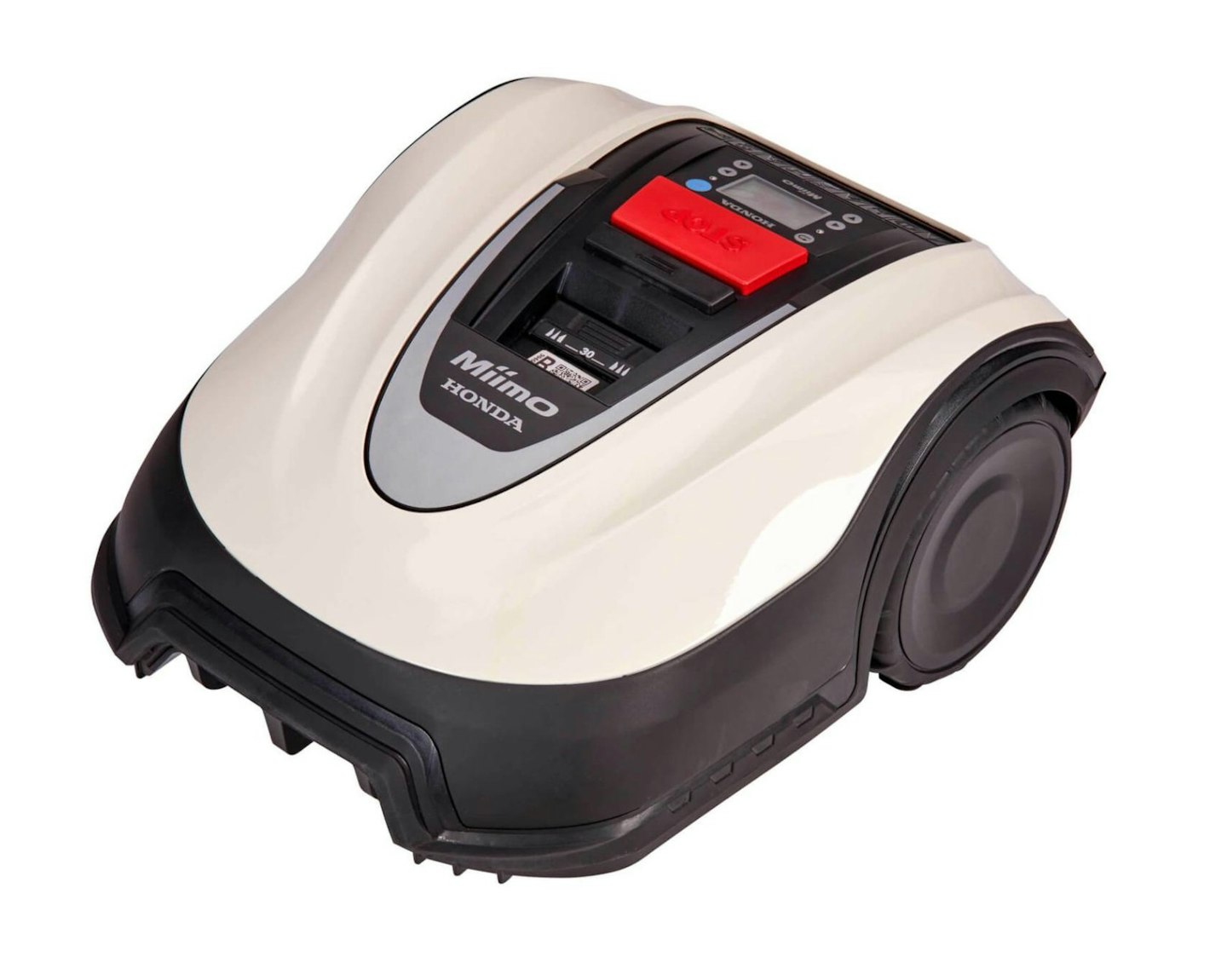 Honda
Hondastore.honda.co.uk
This top-tech design from Honda is Bluetooth compatible, operates off a Smart Timer that receives weather data, and – best of all – can be activated via Alexa. Working rain or shine, it will happily cut lawns up to 400m2 in 5m stripes and comes with 125m of boundary wire. The security features are pretty impressive too.
Making short work of larger lawns, this Honda model is praised in reviews for its intelligent app control and power. Additionally, this mower has three cutting heights: 30mm, 40mm and 50mm so it offers a better range of lawn finishes than most other robot mowers. Grass cuttings are mulched and put goodness back into the lawn. But like most robot lawn mowers, the Honda can be temperamental around obstacles, so be sure to move garden furniture to one side. Also, this is not the best mower for lawns that are on a gradient, anything more than 27 per cent and it won't cope well.
For a large and flat lawn, this weatherproof Honda performs well and beautifully maintains the grass.
Pros
- Security features for safer operation
- Three different cutting heights
- Offers voice control via Alexa
Cons
- Suggests using a lawnmower for the first cut of the season and then let Miimo take over
| Working area: | 400m2 |
| Cutting: | N/A |
| Run time: | N/A |
Best robot lawnmower for ease of use
 Gtech
Gtechwww.gtech.co.uk
In addition to easy-to-use cordless lawn mowers, Gtech have produced an innovative robot lawn mower. It's user-friendly and has three simple-to-select cutting modes. Two of the modes allow you to focus on a particular area of the lawn; either avoiding a problem area or focusing in Spot Mode. It has object detection sensors and if it begins to rain hard it will return to its base until conditions improve. There are safety and security features too.
Customers praise this model for being great value for money, easy to use and performs well. However, some comment that they would like it to be app-compatible.
There are video instructions and an instruction manual available via the product link.
Pros
- Quiet running so it won't disturb the neighbours
- High quality and good value for money
- Cuts the grass beautifully with seven height adjustments
- Easier to use than some other models
Cons
- Be prepared to set up the boundary wire, as it takes a bit of time
| Working area: | 625m² |
| Cutting: | 25mm and 55mm |
| Charge/Run time: | 120/90 minutes |
| Noise level: | 65 dBa |
| Max incline: | Up to 30% |
Best robot lawn mower for multiple lawns
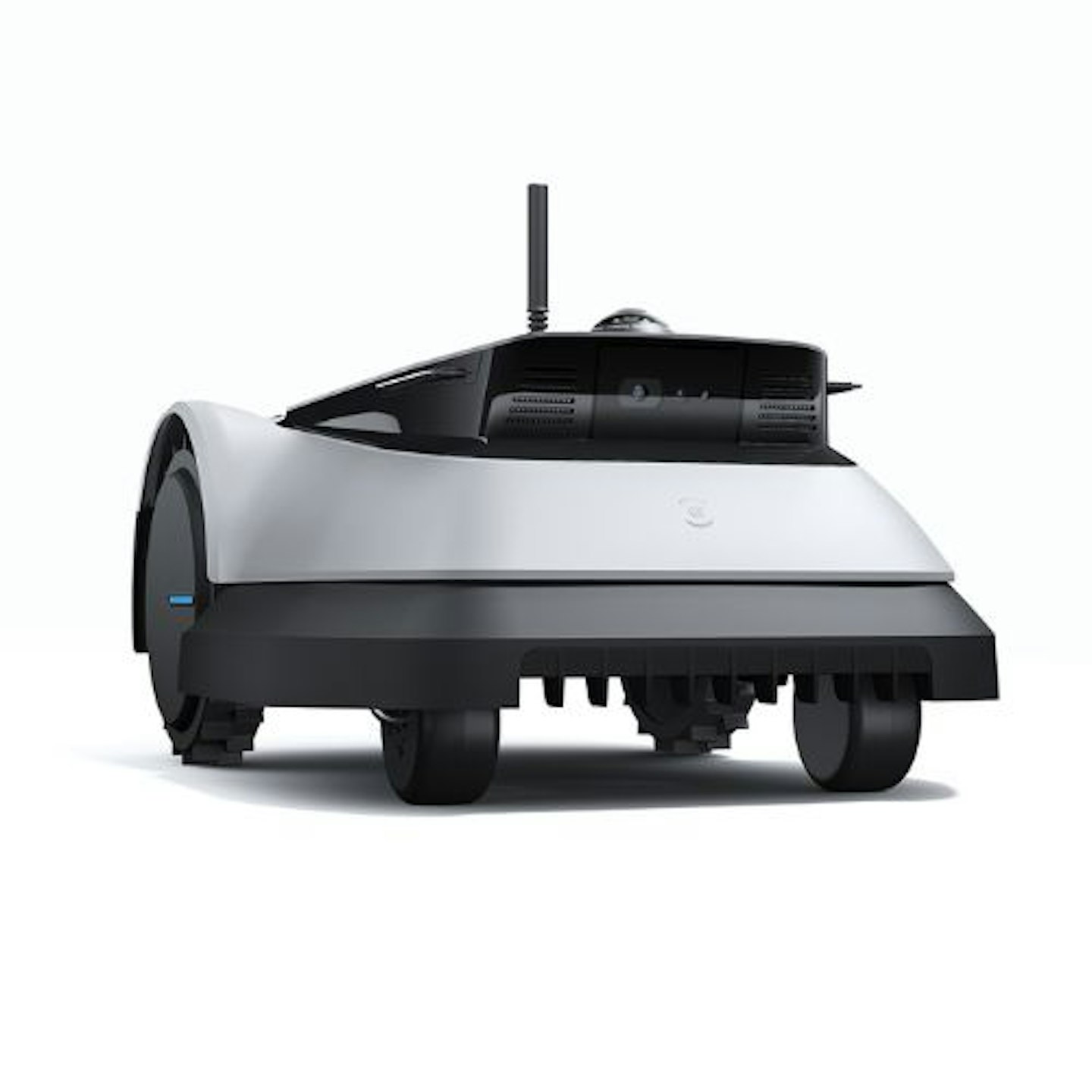 ECOVACS
ECOVACSwww.ecovacs.com
Is it the 'greatest of all time'? With the ECOVACS GOAT G1-800, the cutting boundaries are planned in the app so there are no trip hazards in the garden and set-up is a lot easier. The key benefit is that you can set multiple lawns and define their shapes with Truemapping technology. The GOAT G1-800 recognises its location and it will avoid obstacles in its path. You can set specific cutting heights for particular lawns that grow faster than others. It cuts in a regular up-and-down path, and will automatically return to its docking station when it needs to recharge.
Customers praise the clear instructions and personalised support that make setting up easy. You can plan a weekly mowing schedule in the app.
Be aware that the garage is a separate purchase, but does provide security and protection from harsh weather.
Pros
- Wire-free, define multiple lawn boundaries in the app
- Innovative features and docking station design
- With a wide angle camera it avoids obstacles unlike other models
Cons
- Garage is a separate purchase
| Working area: | 880m2 |
| Cutting: | W22cm; H3-6cm |
| Charge/Run time: | Not specified |
| Noise level: | 59dB |
| Max incline: | 45% |
Best budget robot lawn mower
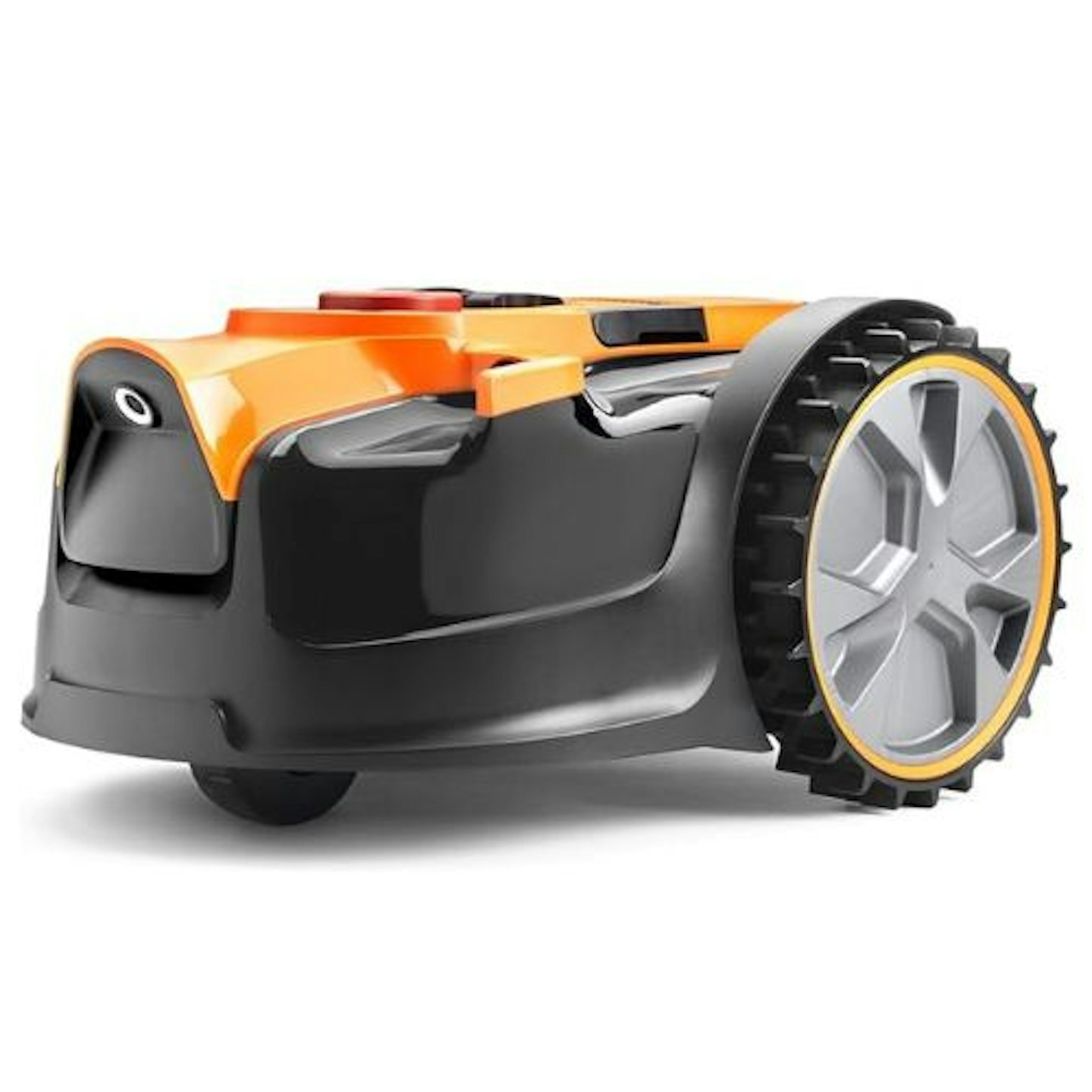 Amazon/LawnMaster
Amazon/LawnMasterFor a budget robot lawn mower that doesn't require boundary wires, this is our recommendation. The LawnMaster VBRM16 OcuMow™ uses a grass recognition camera to stick to a lawn area, where it will mow in a random pattern for up to four hours. Be aware, it's suitable for lawns that have a hard border or flanked by gravel, otherwise, it will fall off soft and overgrown borders.
This Amazon's Choice recommended mower is praised by customers who say it's quiet, works well and eliminates the faff of disposing of grass clippings. Plus, you don't need an outdoor plug socket for recharging, as this model has a detachable battery that goes in a separate charger.
The LawnMaster is designed for small gardens and can deal with slopes up to 35 per cent.
Pros
- No boundary wire makes set-up easier
- Good range of cutting heights so your lawn is how you prefer it
Cons
- Customers comment that it can get itself stuck sometimes
| Working area: | 100m2 |
| Cutting: | W16cm; H 20/30/40/50/60mm |
| Charge/Run time: | 1hr / up to 4hrs |
| Noise level: | Not specified |
| Max incline: | 35% |
How we chose the best robot lawn mowers
All of these robot lawn mowers have been hand-selected by our team of Modern Gardens shopping experts. We carefully considered the performance, ease of use and features in our selection of the best. Our team has spent hours investigating and researching robot lawn mowers to make it easier for you to find the very best, and we'd never recommend a product we don't believe in.
Where possible, we also test and share the latest and best products you should know about. And with help from Modern Gardens Magazine, Garden News and Garden Answers, we share expert gardening knowledge to help you get the most from your product.
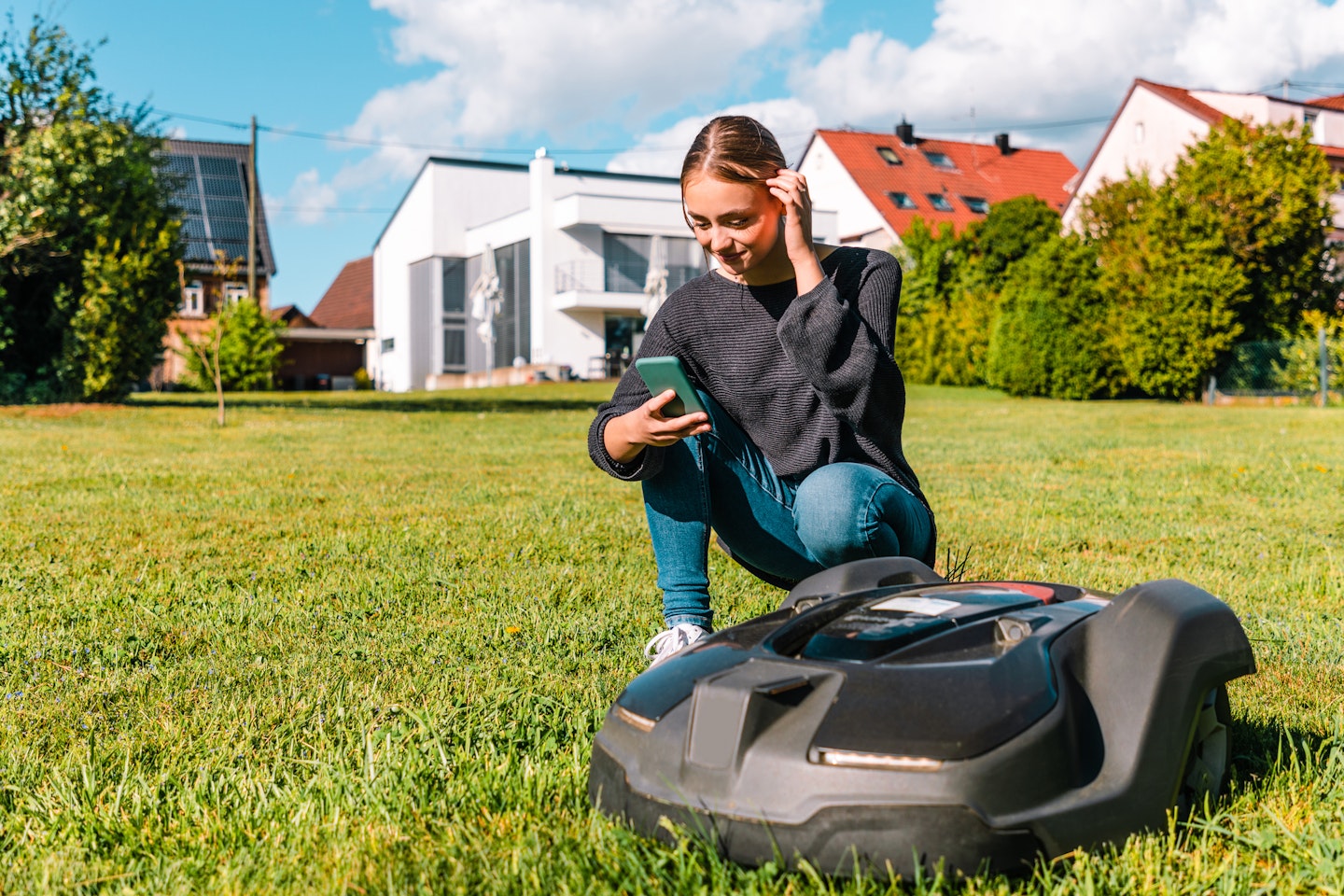
FAQs: Best robot lawn mowers
How do robot mowers work?
Robotic lawn mowers are powered by rechargeable batteries (usually lithium-ion) and use a charging station, dock or home that it returns to once it’s finished cutting or the battery is depleted and needs recharging. The charging station uses a mains electricity supply, so needs setting up within reach of a weatherproof power outlet.
It’s relatively quick and simple to get started, depending on the size and shape of your lawn and whether there are any obstacles to manoeuvre around. Most mowers are kept from straying by an electronic perimeter wire, unobtrusively laid around the lawn edge just under the surface of the turf. This also helps orientate the mower and guide it back to the charging station. A few of the latest models, such as the Segway H1500E above, use a virtual boundary that’s set up using an app.
To set up the mowing programme, most models have simple push-button controls and some can be customised remotely via a smartphone app or virtual assistant such as Alexa. You can then also get status updates, such as whether the mower is charging or cutting, even when you’re away from home.
You don’t need to worry about the clippings either. Because robot mowers cut the grass so regularly, the clippings can be left on the lawn as a mulch to return nutrients to the soil. Some mowers have fast or double blades that chop the clippings finely and, like a mulching mower, blow them down into the grass.
Most robotic lawn mowers come with all you need to install the mower and set it up, but do check what’s included, especially if your lawn isn’t a standard patch as you may need to purchase different accessories. You might even consider a robot lawn mower 'garage' to house it.
What to consider when buying a robot lawn mower:
• Lawn size. Robotic mowers have a maximum lawn size that they can easily cut without having to continually recharge. Don’t choose a small mower for a lawn larger than the maximum quoted; for a start, it may not come supplied with enough perimeter wire. Similarly, if you have a small lawn, consider reading our guide on the best robot lawn mower under £500.
• Lawn finish. Faster blades give a finer cut, while double blades will chop the cut grass into a finer mulch that won’t be noticeable. Check to see what grass-cutting height options are available: most will offer heights from 3cm to 6cm in 1cm increments, but some offer a wider range of lengths or 5mm increments.
• Lawn shape and style. Some mowers are better than others at coping with sharp angles and oddly shaped nooks and crannies, likewise any bumps and hollows in the lawn.
• Slopes. Most can easily handle a gentle incline, but if your lawn steeply slopes, some models will happily tackle angles of up to 45°.
• Obstacles. Depending on the model, you may need to mark off any in-lawn permanent obstacles such as trees, sculptures and beds. If you’ve got lots of obstacles then it’s quicker to use a mower that uses a virtual boundary than one using a perimeter wire or one that relies on sensors to detect obstacles and automatically manoeuvre around them.
• Run time. Most lithium-ion batteries give 45-60 mins of cutting time from each full charge in as little as 30 mins. The output, measured in volts (V), is an indication of how powerful the battery is. The amp hour (Ah) rating refers to the amount of charge it holds, which affects how long it runs before it needs recharging. Some mowers remember where they left off before recharging and return to this position afterwards, which saves on power.
• Rainy days. Some higher-grade models can cut grass in wet conditions, but if your lawn is small, there’s no need for this option. Some have a rain sensor and return to their dock when the rain starts falling and resume when it stops.
• Lawn use. If you’ve got pets who use your lawn then an obstacle sensor is a must.
• Noise level. Some of the newer models are incredibly quiet, emitting nothing more than a satisfying hum.
• Security. If you’re worried about the mower being stolen, choose a model with built-in
anti-theft devices. These include alarms if the mower is moved outside of its perimeter boundary, security sensors, PIN codes and GPS tracking to monitor its location.
How to care for a robot lawn mower
Being designed specifically for outdoor use, robot lawn mowers are hardy and able to deal with adverse weather. However, in winter, when temperatures drop low, and lawn mowing is not required, it is best to store the robot lawn mower and the charging station in the garage or similar in order to protect it from harsh winter weather.
All the robot lawn mowers above can be cleaned easily with a hose on low pressure, not high pressure. You can also use a brush on the body and underside around the blade disc.
In terms of placement of the charging station, it needs to be on the edge of the lawn, somewhere as sheltered as possible.
What to read next:
Best electric lawn mower to make cutting grass straightforward
Subscribe to Modern Gardens magazine and get the most out of your outdoor space. Discover everything you need to know to make your outside space look fantastic, quickly and easily, with hundreds of simple ideas, designer tricks, affordable products and expert advice in every issue of Modern Gardens. View our latest subscription offers to save on shop prices.
Geoff Hodge is a freelance garden writer and editor for Modern Gardens magazine and various other national gardening magazines and websites. Previously, he was online editor for the Royal Horticultural Society. He has written eight gardening books, including five for the RHS.
This article also includes contributions from Jill Morgan. Jill Morgan writes regularly for Modern Gardens, and loves everything to do with gardens, plants and outdoor living. Her long thin, town garden is the setting for many family and creative projects from bird feeding and veggie growing to den building and mini-pond dipping.
